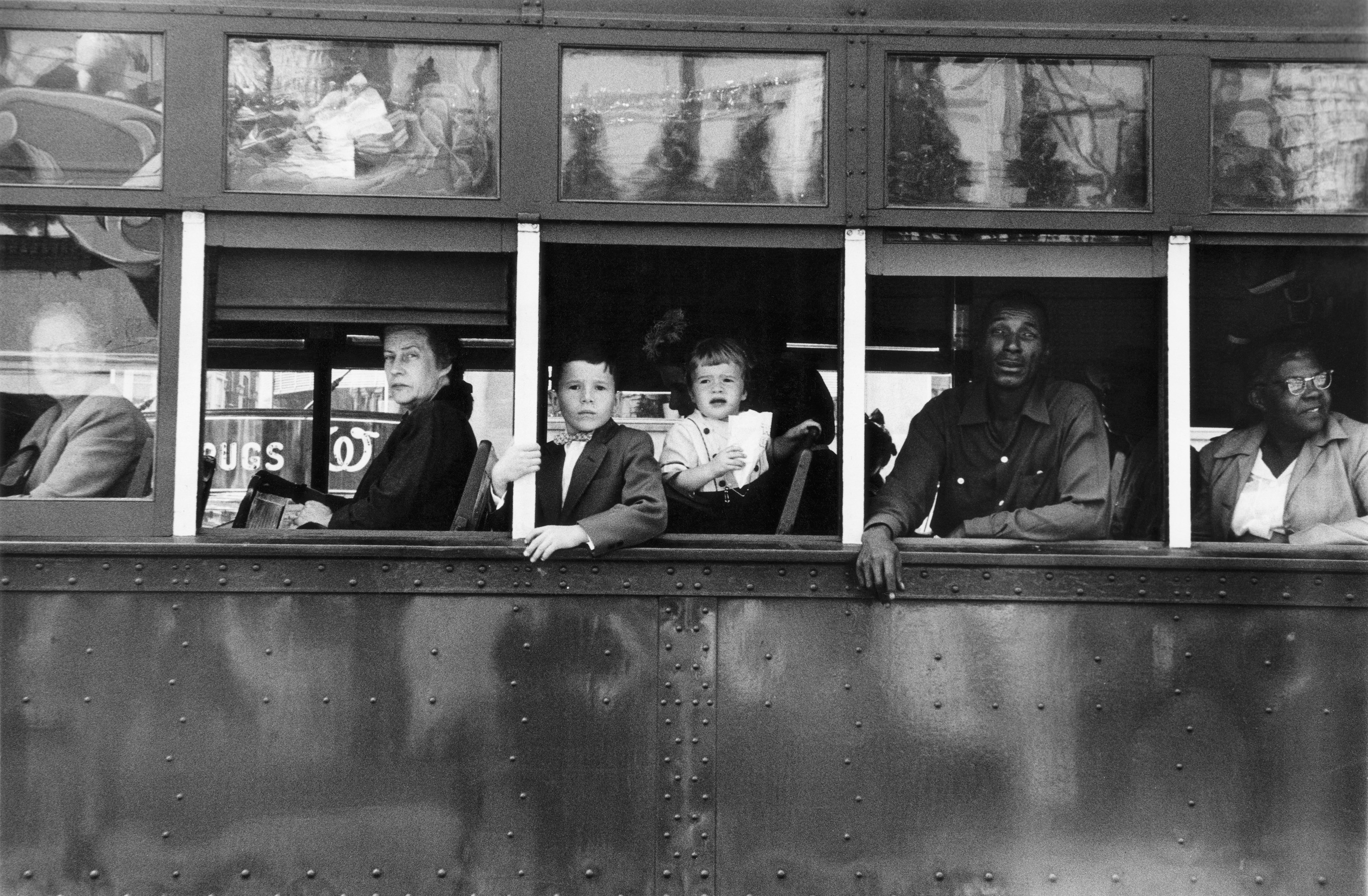“That crazy feeling in America when the sun is hot and music comes out of the jukebox or from a nearby funeral, that’s what Robert Frank has captured in tremendous photographs taken as he travelled on the road around practically forty-eight states in an old used car (on Guggenheim Fellowship) and with agility, mystery, genius, sadness, and strange secrecy of a shadow photographed scenes that have never been seen before on film.”
– Jack Kerouac, introduction to “The Americans” by Robert Frank
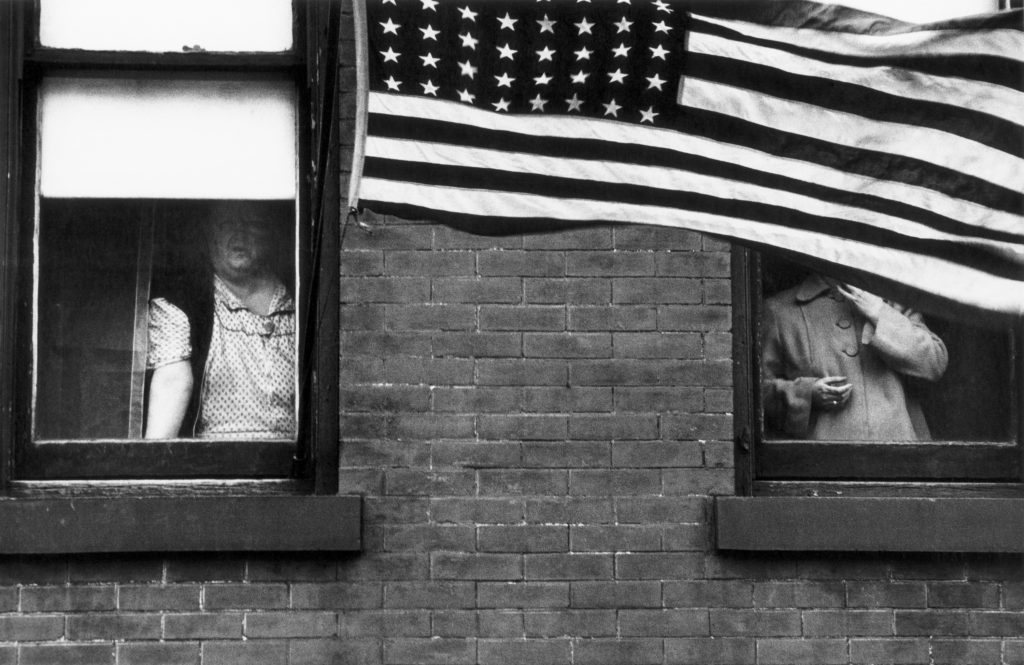 Parade – Hoboken, New Jersey, 1955 © Robert Frank from The Americans, courtesy Pace/MacGill
Parade – Hoboken, New Jersey, 1955 © Robert Frank from The Americans, courtesy Pace/MacGill
Legendary American photographer, Robert Frank, passed away on September 9 at the age of 94, leaving behind an incredible legacy that shaped the way documentary photography is understood today.
Renowned for his raw and honest photo-book, “The Americans”, Frank was a pioneer of the modern documentary style and is one the most influential photographers of the 20th century. Capturing life as he saw it, Frank’s documentary images set themselves apart from the contrived photojournalist style of the day. Motivated by his determination to present what he saw, “pure and simple”, as he explains in an interview with the Guardian; Frank’s images are uncompromising, atypical, and infused with a touch of humour.
A fresh perspective
Born in 1924 in Zurich, Switzerland, Frank trained as a commercial studio photographer until immigrating to New York in 1947 where he became a fashion photographer for Harpers Bazaar. However, Frank soon felt that he was unsuited to the creative restraints of the magazine and travelled through South America and Europe with his 35mm camera in hand. He published a series of photo-books from Peru, London, and Wales. In 1955, Frank received the Guggenheim Fellowship and embarked on a two-year long road-trip across the United States, photographing the people and places objectively as he saw them and exposing over 800 rolls of film on his 35mm Leica. “The Americans”, a photo-book comprising of 83 black and white photographs, is a raw depiction of mid-century America. As an outsider, Frank’s fresh perspective was advantageous, enabling him to document America without bias or an idealised view of what America should be. Unlike other documentary photographers of the time, such as FSA photographers Dorothea Lange and Jack Delano, Frank was removed from the restraints of political agenda. Free from the necessity to persuade, Frank’s images explored and expressed his own experiences. Pointing his camera at the diners, jukeboxes, televisions, American flag, cars and streets, Frank transformed them into iconic motifs, revealing a lonely America divided by racism that was far from the American dream, yet poignantly rich in reality. As Kerouac exclaims in his introduction, “the humour, the sadness, the EVERYTHING-ness and American-ness of these pictures!”.
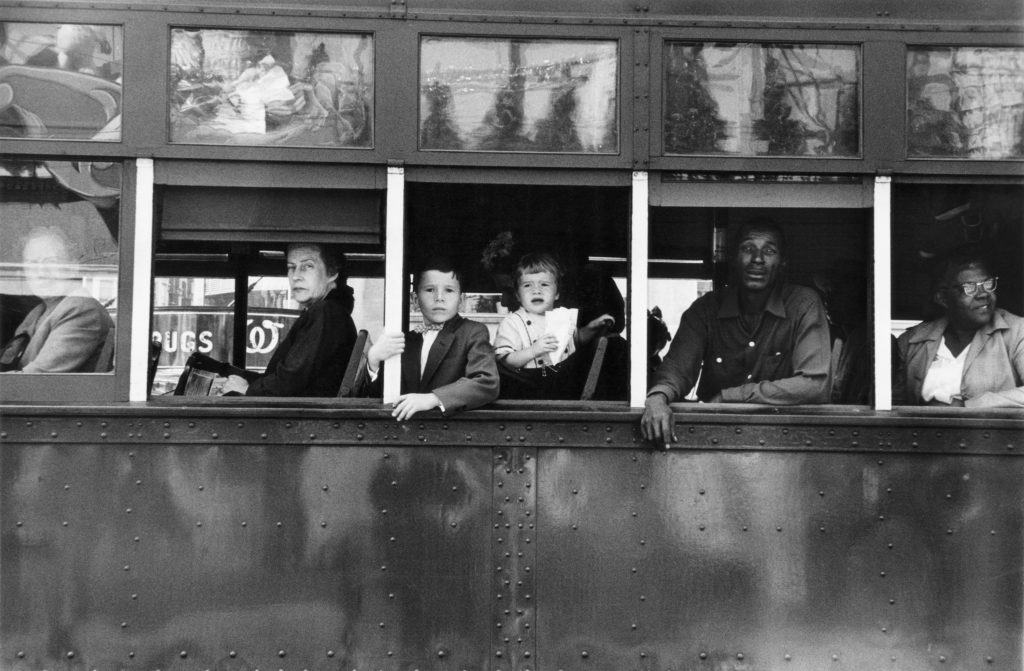 Trolley – New Orleans, 1955 © Robert Frank from The Americans, courtesy Pace/MacGill
Trolley – New Orleans, 1955 © Robert Frank from The Americans, courtesy Pace/MacGill
The snapshot aesthetic
Initially met with rejection, “The Americans” was first published in France in 1958 and later in the U.S. in 1959. Asides from being Anti-American, Frank’s images were unpopular in their grainy appearance and off-kilter horizons. A review in Practical Photography described his images as “meaningless blur, grain, muddy exposures, drunken horizons and general sloppiness”. In contrast to the modern idea of what constituted a good photograph, Frank’s unfocused blurred forms, grain, and slightly tilted horizons gave his images a sense of immediacy and authenticity. In an interview with the San Francisco Museum of Modern Art (SFMMA), Frank explains, “you have to be quick as a photographer not to be noticed too much…you’ve gotta be quick and ready to shoot”. The snapshot documentary style was later praised for its expressiveness, and influenced younger documentary photographers including Diane Arbus and Garry Winogrand, who exhibited alongside Frank in the exhibition “New Documents” at MoMa in 1969.
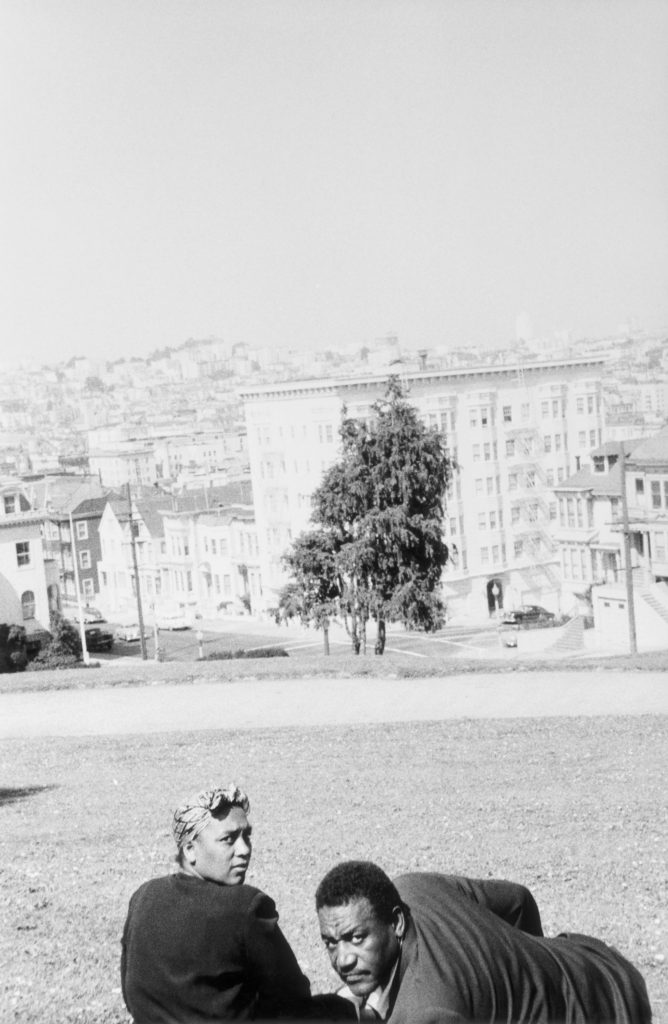 San Francisco, 1956 © Robert Frank from The Americans, courtesy Pace/MacGill
San Francisco, 1956 © Robert Frank from The Americans, courtesy Pace/MacGill
In his image, “San Francisco”, Frank captures a suspicious looking couple and commented in his interview with the SFMMA,“I disrupt them. I’m an intruder. It’s the look you get as a photographer, when you intrude”.
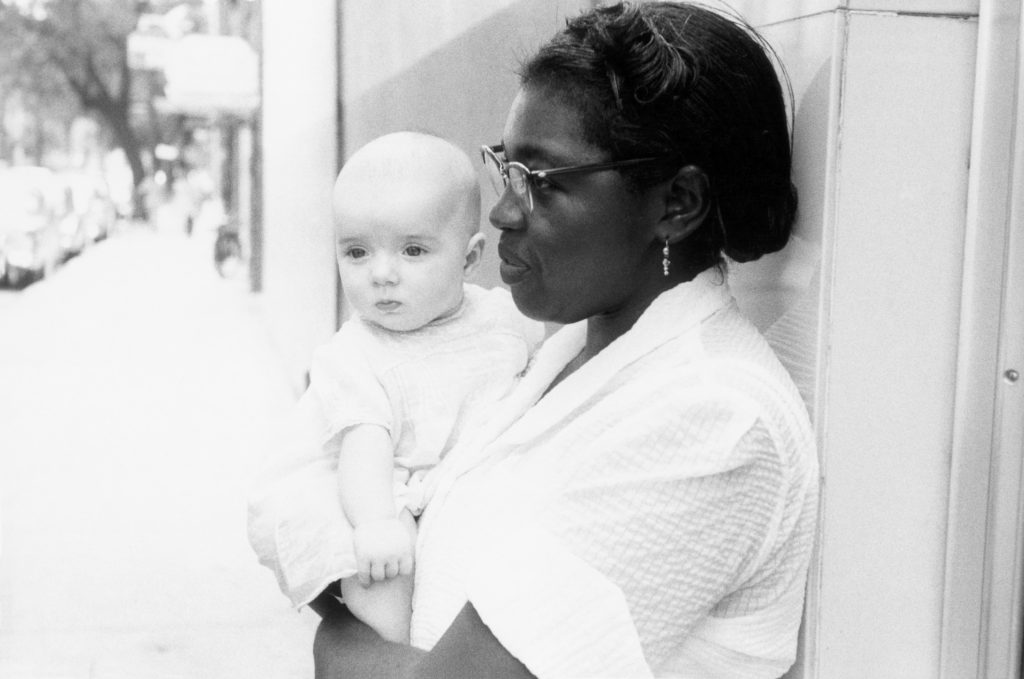 Charleston, South Carolina, 1955 © Robert Frank from The Americans, courtesy Pace/MacGill
Charleston, South Carolina, 1955 © Robert Frank from The Americans, courtesy Pace/MacGill
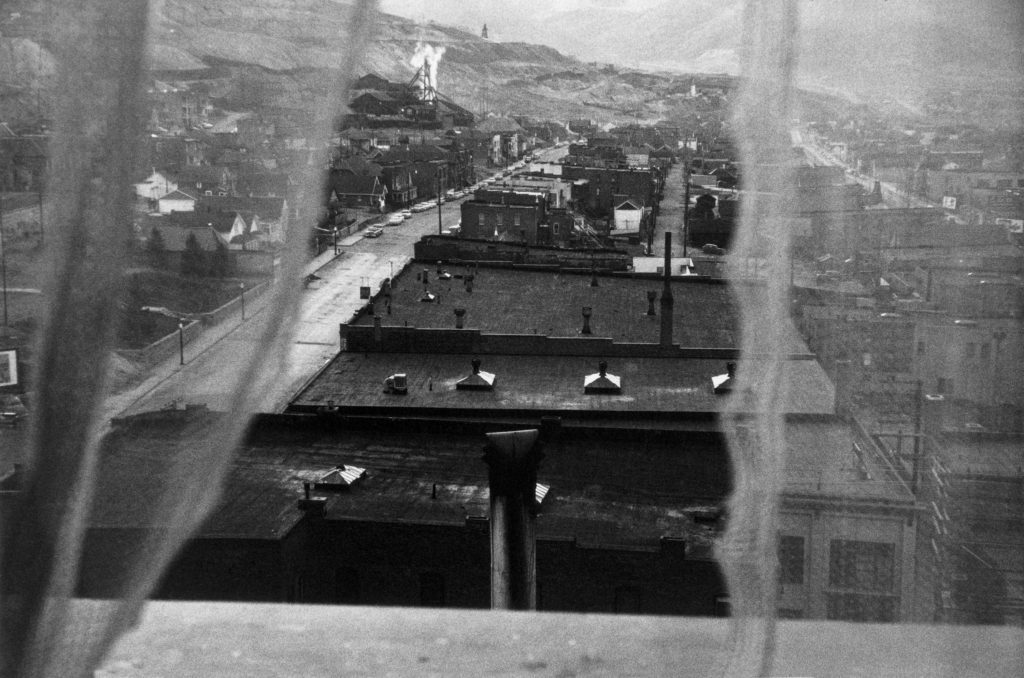 View from hotel window – Butte, Montana, 1956 © Robert Frank from The Americans, courtesy Pace/MacGill
View from hotel window – Butte, Montana, 1956 © Robert Frank from The Americans, courtesy Pace/MacGill
Later work
Among his earlier publications, “The Americans” is now considered to the be most important book of photographs published since World War II. After successfully moving on to film for several years, Frank returned to photography after the tragic death of his daughter, Andrea, in 1974. His later work included prints and polaroids with words either written or scratched on the surfaces.
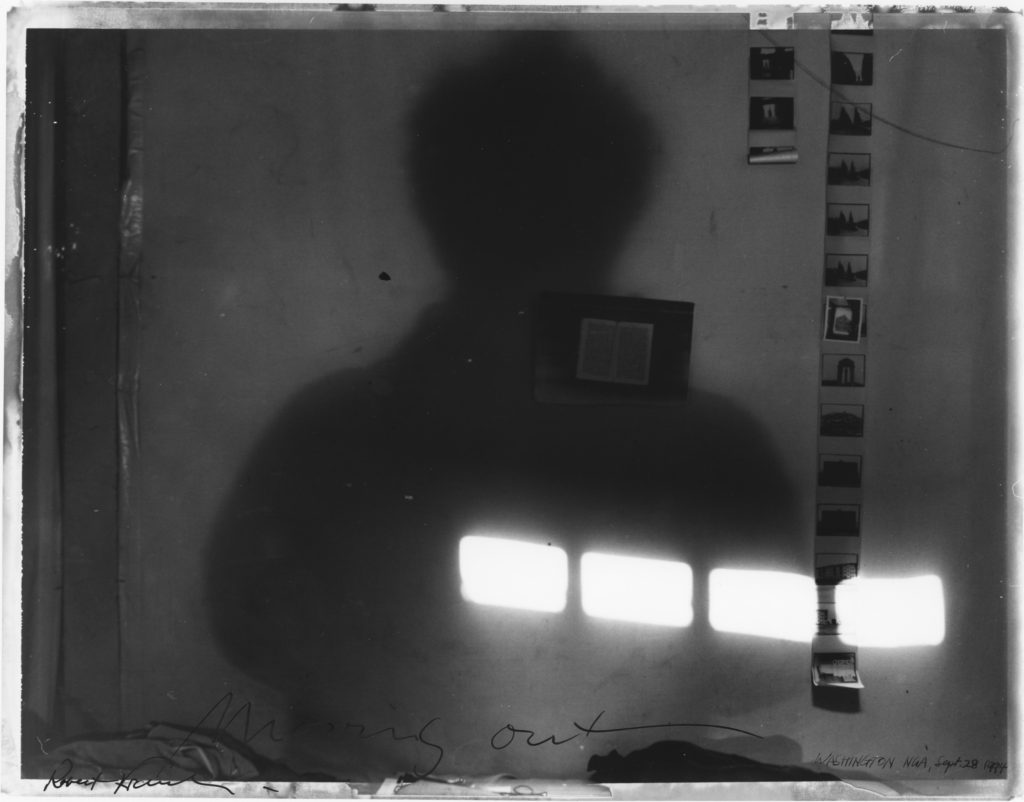 New York City, 7 Bleecker Street, September, 1993 © Robert Frank, courtesy Pace/MacGill
New York City, 7 Bleecker Street, September, 1993 © Robert Frank, courtesy Pace/MacGill
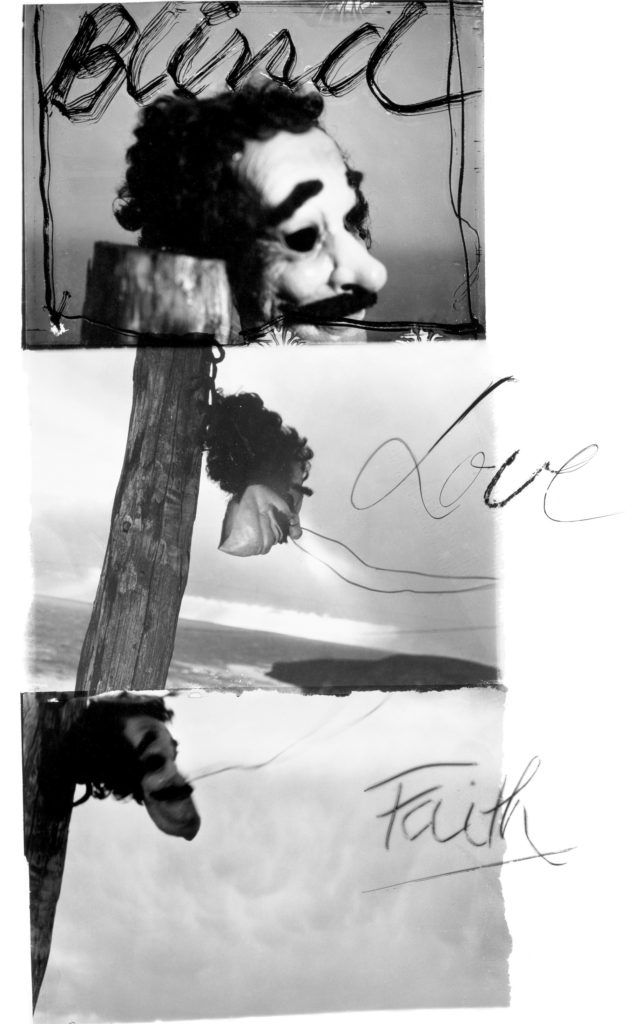 Blind, Love, Faith, 1981 © Robert Frank, courtesy Pace/MacGill
Blind, Love, Faith, 1981 © Robert Frank, courtesy Pace/MacGill
The expressive and atypical style of Robert Frank altered the course of documentary photography and changed the way it was perceived. Pushing beyond the boundaries and limits of conventional photography, Frank’s imagery unhinged America. In the words of Jack Kerouac, “Robert Frank…you got eyes”.


